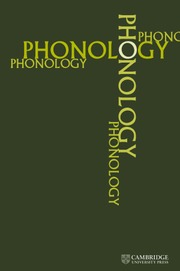No CrossRef data available.
Article contents
Janina Mołczanow (2022). Interactions of vowel quality and prosody in East Slavic. (Advances in Optimality Theory.) Sheffield: Equinox. Pp. v + 203.
Review products
Janina Mołczanow (2022). Interactions of vowel quality and prosody in East Slavic. (Advances in Optimality Theory.) Sheffield: Equinox. Pp. v + 203.
Published online by Cambridge University Press: 22 October 2024
Abstract
An abstract is not available for this content so a preview has been provided. Please use the Get access link above for information on how to access this content.
- Type
- Review
- Information
- Copyright
- © The Author(s), 2024. Published by Cambridge University Press
References
Alderete, John (2001). Morphologically governed accent in Optimality Theory. New York: Routledge.Google Scholar
Bethin, Christina Y. (2006). Stress and tone in East Slavic dialects. Phonology 23, 125–156.CrossRefGoogle Scholar
Crosswhite, Katherine (2001). Vowel reduction in Optimality Theory. New York: Routledge.Google Scholar
de Lacy, Paul (2006). Markedness: reduction and preservation in phonology. Cambridge: Cambridge University Press.CrossRefGoogle Scholar
Mołczanow, Janina (2015). The interaction of tone and vowel quality in Optimality Theory: a study of Moscow Russian vowel reduction. Lingua 163, 108–137.CrossRefGoogle Scholar
Parker, Stephen G. (2002). Quantifying the sonority hierarchy. PhD dissertation, University of Massachusetts Amherst.Google Scholar
Prince, Alan & Smolensky, Paul ([1993] 2004). Optimality Theory: constraint interaction in generative grammar. Oxford: Blackwell. Originally published in 1993 as technical report no. 2 of the Rutgers Center for Cognitive Science. ROA \#537.CrossRefGoogle Scholar
Vinogradov, Georgy S. ([1926] 2005). Detskie tajnye jazyki [Children’s secret languages]. Russkij jazyk 16, 14–25.Google Scholar



